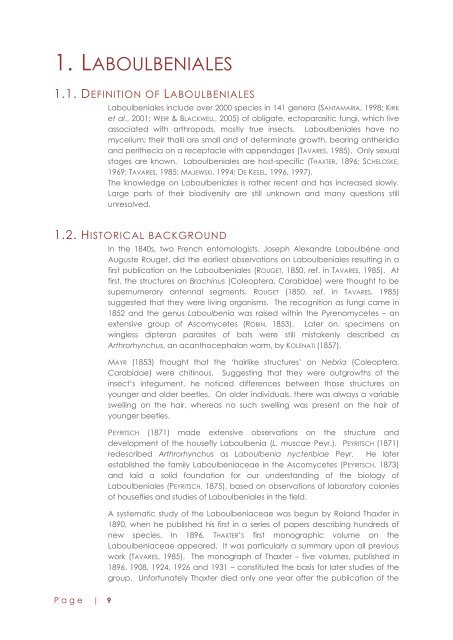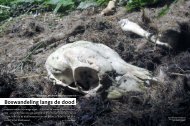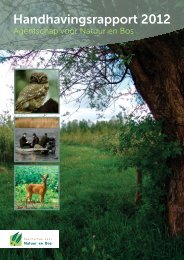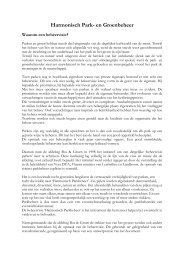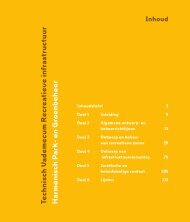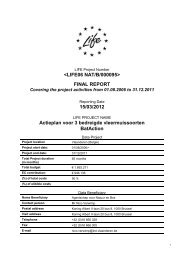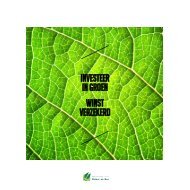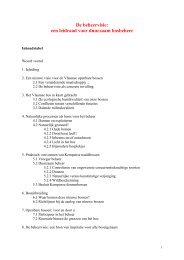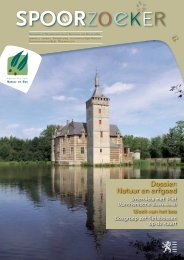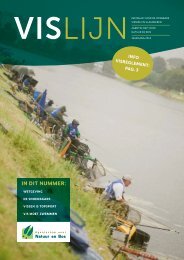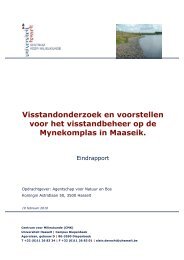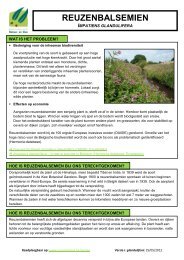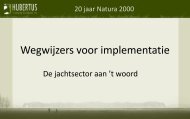1. <strong>LABOULBENIALES</strong>1.1. DEFINITION OF <strong>LABOULBENIALES</strong>Laboulb<strong>en</strong>iales include over 2000 species in 141 g<strong>en</strong>era (SANTAMARIA, 1998; KIRKet al., 2001; WEIR & BLACKWELL, 2005) of obligate, ectoparasitic fungi, which liveassociated with arthropods, mostly true insects. Laboulb<strong>en</strong>iales have nomycelium; their thalli are small and of determinate growth, bearing antheridiaand perithecia on a receptacle with app<strong>en</strong>dages (TAVARES, 1985). Only sexualstages are known. Laboulb<strong>en</strong>iales are host-specific (THAXTER, 1896; SCHELOSKE,1969; TAVARES, 1985; MAJEWSKI, 1994; DE KESEL, 1996, 1997).The knowledge on Laboulb<strong>en</strong>iales is rather rec<strong>en</strong>t and has increased slowly.Large parts of their biodiversity are still unknown and many questions stillunresolved.1.2. HISTORICAL BACKGROUNDIn the 1840s, two Fr<strong>en</strong>ch <strong>en</strong>tomologists, Joseph Alexandre Laboulbéne andAuguste Rouget, did the earliest observations on Laboulb<strong>en</strong>iales resulting in afirst publication on the Laboulb<strong>en</strong>iales (ROUGET, 1850, ref. in TAVARES, 1985). Atfirst, the structures on Brachinus (Coleoptera, Carabidae) were thought to besupernumerary ant<strong>en</strong>nal segm<strong>en</strong>ts. ROUGET (1850, ref. in TAVARES, 1985)suggested that they were living organisms. The recognition as fungi came in1852 and the g<strong>en</strong>us Laboulb<strong>en</strong>ia was raised within the Pyr<strong>en</strong>omycetes – anext<strong>en</strong>sive group of Ascomycetes (ROBIN, 1853). Later on, specim<strong>en</strong>s onwingless dipteran parasites of bats were still mistak<strong>en</strong>ly described asArthrorhynchus, an acanthocephalan worm, by KOLENATI (1857).MAYR (1853) thought that the „hairlike structures‟ on Nebria (Coleoptera,Carabidae) were chitinous. Suggesting that they were outgrowths of theinsect‟s integum<strong>en</strong>t, he noticed differ<strong>en</strong>ces betwe<strong>en</strong> those structures onyounger and older beetles. On older individuals, there was always a variableswelling on the hair, whereas no such swelling was pres<strong>en</strong>t on the hair ofyounger beetles.PEYRITSCH (1871) made ext<strong>en</strong>sive observations on the structure anddevelopm<strong>en</strong>t of the housefly Laboulb<strong>en</strong>ia (L. muscae Peyr.). PEYRITSCH (1871)redescribed Arthrorhynchus as Laboulb<strong>en</strong>ia nycteribiae Peyr. He laterestablished the family Laboulb<strong>en</strong>iaceae in the Ascomycetes (PEYRITSCH, 1873)and laid a solid foundation for our understanding of the biology ofLaboulb<strong>en</strong>iales (PEYRITSCH, 1875), based on observations of laboratory coloniesof houseflies and studies of Laboulb<strong>en</strong>iales in the field.A systematic study of the Laboulb<strong>en</strong>iaceae was begun by Roland Thaxter in1890, wh<strong>en</strong> he published his first in a series of papers describing hundreds ofnew species. In 1896, THAXTER‟S first monographic volume on theLaboulb<strong>en</strong>iaceae appeared. It was particularly a summary upon all previouswork (TAVARES, 1985). The monograph of Thaxter – five volumes, published in1896, 1908, 1924, 1926 and 1931 – constituted the basis for later studies of thegroup. Unfortunately Thaxter died only one year after the publication of theP a g e | 9
fifth volume, therefore the sixth volume – which was meant to be a synthesis –was never prepared. More than 40 years study resulted in the description of103 g<strong>en</strong>era, approximately 1260 species and 13 varieties (BENJAMIN, 1971). Upto now, about two thirds of all the known species have be<strong>en</strong> described byThaxter (HULDÉN, 1983).THAXTER (1896) first separated the family of the Laboulb<strong>en</strong>iaceae into two„groups‟ (Table I below): the Endog<strong>en</strong>ae and the Exog<strong>en</strong>ae (based on thedevelopm<strong>en</strong>t of spermatia in the antheridia). The Endog<strong>en</strong>ae included twoorders: the Laboulb<strong>en</strong>ieae (with simple antheridia; 15 g<strong>en</strong>era) and thePeyritschielleae (with compound antheridia; 11 g<strong>en</strong>era). Those orders wouldcorrespond to tribes in modern classification systems. In the second volumeTHAXTER (1908) replaced the terms Endog<strong>en</strong>ae and Exog<strong>en</strong>ae by the subordinalnames Laboulb<strong>en</strong>iinae and Ceratomycetinae (Table I below); the majorsubdivisions from the former group Endog<strong>en</strong>ae were substituted by families,Laboulb<strong>en</strong>iaceae and Peyritschiellaceae. Thaxter did not recognize aseparate family within the Ceratomycetinae. The name Ceratomycetaceae –now universally accepted – first has be<strong>en</strong> introduced by MAIRE in 1916.Volume I Family Laboulb<strong>en</strong>iaceaeTable I: Classification in Thaxter‟s monographs I and II„Group‟ Endog<strong>en</strong>ae Exog<strong>en</strong>aeOrder Laboulb<strong>en</strong>ieae PeyritschielleaeVolume II Order Laboulb<strong>en</strong>ialesSuborder Laboulb<strong>en</strong>iinae CeratomycetinaeFamily Laboulb<strong>en</strong>iaceae PeyritschiellaceaeP a g e | 10After Thaxter‟s death in 1932, various authors contributed to the knowledge bypublishing some short papers and/or describing new species and g<strong>en</strong>era:Spegazzini, Picard, Maire, Chatton, Cépède, Giard and Istvánffi. The majorityof the numerous publications that have appeared were regional studies,collection reports and rather short (TAVARES, 1985; DE KESEL, 1997). However,wh<strong>en</strong> considered together, they have added ext<strong>en</strong>sive data on thedistribution of these fungi.Some researchers suggested a relationship betwe<strong>en</strong> red algae andLaboulb<strong>en</strong>iales and thought that Dikaryomycota derived from red algae, withthe Laboulb<strong>en</strong>iales as an intermediate step KARSTEN, 1869; SACHS, 1874). Sexualreproductive structures, including a highly differ<strong>en</strong>tiated trichogyne and theabs<strong>en</strong>ce of mycelium, are unusual ascomycete characteristics andsuperficially resemble floridean algal features (BLACKWELL, 1994). CÉPÈDE (1914)believed the Laboulb<strong>en</strong>iales as a whole occupied a special place among thefungi; he placed them in the Phycascomycetes, a name he proposedbecause of the superficial similarities both to the Ascomycetes and to theRhodophyta (red algae). Until g<strong>en</strong>eticists unquestionably proved thatAscomycetes derived from Chytridiomycetes-like ancestors, this “Red Algal (orFloridean) Hypothesis” persisted (JAMES et al., 2006). The analysis of JAMES et al.(2006) suggests that several clades of the Chytridiomycota (true fungi, stillproducing zoospores) form a paraphyletic assemblage at the base of the
- Page 3: LABOULBENIALESEXPLORING AND TESTING
- Page 7 and 8: PART IVPRELIMINARY CHECKLIST OF LAB
- Page 9 and 10: SAMENVATTINGINLEIDINGLaboulbeniales
- Page 11: PART IGENERAL INTRODUCTIONTHESIS OU
- Page 16 and 17: 1.3.3. THE PERITHECI UMAscospores o
- Page 18 and 19: The identity of appendages, togethe
- Page 20 and 21: Figure IV: Position of Laboulbeniom
- Page 22 and 23: LUMBSCH & HUHNDORF (2007) distingui
- Page 25 and 26: Substrate is the intermediate facto
- Page 27: CAVARA (1899, ref. in BENJAMIN, 197
- Page 35 and 36: 1. INTRODUCTION1.1. DIFFICULTIES FO
- Page 37 and 38: 2. MATERIALS & METHODS2.1. FUNGUS,
- Page 39 and 40: 2.2.6. PROTOCOL V: DIRECT PCROne th
- Page 41 and 42: P a g e | 38chance. Thus, the lower
- Page 43 and 44: coll1133 Laboulbenia collae IV 608l
- Page 45 and 46: Cladosporium (Ascomycota, Dothideom
- Page 47 and 48: 5. CONCLUSION AND SUGGESTIONSMany a
- Page 49 and 50: 1. INTRODUCTION1.1. FORENSIC ENTOMO
- Page 51 and 52: Different groups of carrion beetles
- Page 53 and 54: The 1.319 ha Meerdaal Forest has be
- Page 55 and 56: 2.2. MEERDAAL FOREST(DA TA NA TI O
- Page 57 and 58: approximately 2.700 are found in Eu
- Page 59 and 60: Order ColeopteraSuborder PolyphagaI
- Page 61 and 62: Dermestidae 8 2 23 (3) / 22 (4)Elat
- Page 63 and 64:
Table XXIV: Family Cerambycidae fro
- Page 65 and 66:
Table XXVIII: Family Dermestidae fr
- Page 67 and 68:
Adults prey on other flower-visitin
- Page 69 and 70:
Table XXXV: Family Scarabaeidae fro
- Page 71 and 72:
Creophilus Samouellemaxillosus (Lin
- Page 73 and 74:
4.3. LABOULBENIALES OF CARRION BEET
- Page 75 and 76:
The knowledge about the preferences
- Page 77 and 78:
Table XLII: Comparison of carrion b
- Page 79 and 80:
5. CONCLUSION AND SUGGESTIONSNo spe
- Page 81 and 82:
1. INTRODUCTION1.1. NATURAL LANDSCA
- Page 83 and 84:
In the 40s, Middelhoek studied and
- Page 85 and 86:
2. MATERIALS & METHODS2.1. HOSTS2.1
- Page 87 and 88:
Screening of the insects was done w
- Page 89 and 90:
3. RESULTS3.1. PARASITE-HOST LISTA
- Page 91 and 92:
Figure XV: Detail of thallus of Lab
- Page 93 and 94:
isodiametric or slightly elongate,
- Page 95 and 96:
occurs in the lower receptacle (cel
- Page 97 and 98:
Discussion:Two species of the genus
- Page 99 and 100:
anches (15-)34-38(-40) µm long, te
- Page 101 and 102:
5. CONCLUSION AND SUGGESTIONSIn The
- Page 103 and 104:
P a g e | 100ADRIAENS, T. & GYSELS,
- Page 105 and 106:
transmission, habitat preference an
- Page 107 and 108:
STALPERS, J.A., VILGALYS, R., AIME,
- Page 109 and 110:
MELIS, C., TEURLINGS, I. LINNELL, J
- Page 111 and 112:
SCHILTHUIZEN, M. & VALLENDUUK, H. (


